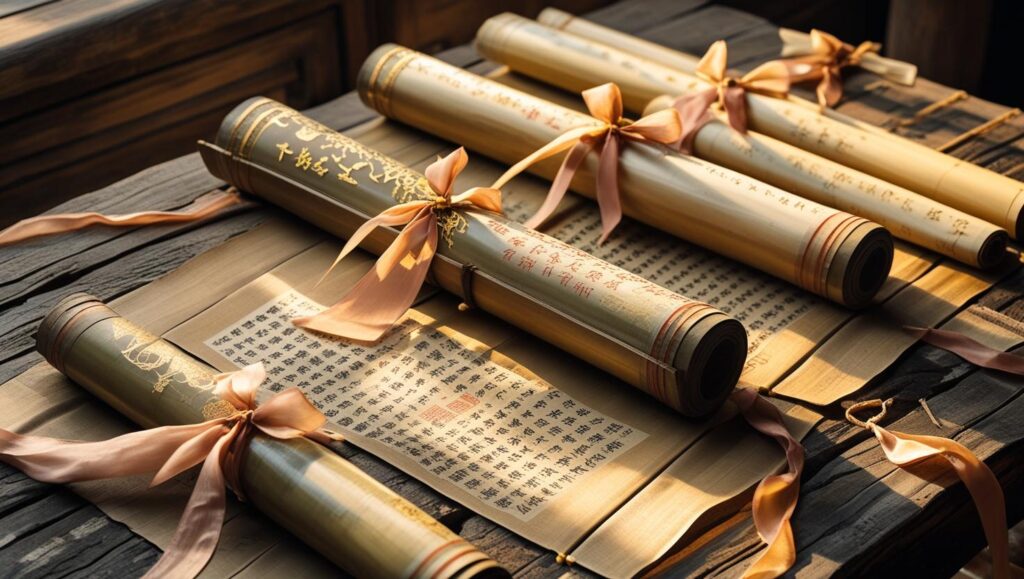
What is Qi Men Dun Jia
Qi Men Dun Jia (奇门遁甲, QMDJ) is an ancient Chinese metaphysical system used for strategy, divination, and timing. It is often referred to as the “art of hidden doors” or “mysterious gates,” emphasizing its ability to reveal opportunities and obstacles hidden in everyday life.
Unlike ordinary fortune-telling, QMDJ combines elements of astronomy, mathematics, and Taoist philosophy to provide highly specific guidance. Each chart reflects the interplay of stars (九星), doors (八门), and gods (八神), allowing practitioners to make informed decisions in areas ranging from personal relationships to business ventures.
QMDJ is not just predictive—it is strategic. It helps individuals understand the timing of events, evaluate risks, and identify the most favorable courses of action. In this article, we will explore the system’s history, structure, and applications, offering a comprehensive beginner-friendly overview.
History & Origins

Qi Men Dun Jia dates back over 2,000 years and is considered one of China’s three major divination systems, alongside Tai Yi and Liu Ren. It was originally developed for military strategy, helping generals plan battles by analyzing timing, terrain, and energy flows. Historical texts suggest that famous Chinese strategists and emperors consulted QMDJ before major decisions.
Over time, its use expanded beyond warfare to encompass personal, business, and social guidance. Taoist scholars refined the system, incorporating cosmology, numerology, and Yin-Yang principles. By aligning human action with celestial timing, QMDJ became a versatile tool for predicting outcomes, identifying opportunities, and avoiding pitfalls.
Today, QMDJ is practiced worldwide, valued for its precision and applicability in modern life. Its historical significance underscores the system’s credibility, while its adaptability ensures it remains relevant for contemporary decision-making.
Structure of the System

QMDJ charts are built upon a 3×3 grid representing nine palaces, each containing multiple layers of information. The key components are:
- Stars (九星) – Represent influences, personalities, and energy tendencies. Examples include:
- 天蓬星 (Tian Peng) – Risk-taking, leadership.
- 天任星 (Tian Ren) – Loyalty, support, cooperation.
- 天蓬星 (Tian Peng) – Risk-taking, leadership.
- Doors (八门) – Indicate the type of action or result:
- 生门 (Life Door) – Growth and opportunity.
- 伤门 (Injury Door) – Conflict or setback.
- 生门 (Life Door) – Growth and opportunity.
- Gods (八神) – Subtle forces affecting outcomes:
- 六合 (Liu He) – Cooperation and partnership.
- 白虎 (Bai Hu) – Challenges or obstacles.
- 六合 (Liu He) – Cooperation and partnership.
The system also incorporates heavenly stems, earthly branches, and temporal cycles, which shift the chart depending on year, month, day, and hour. This allows for precise timing of actions and prediction of outcomes.
Each palace acts as a lens through which a particular aspect of life is analyzed, whether personal, professional, or relational. By understanding the positions and interactions of stars, doors, and gods, practitioners can generate insights into the most favorable strategies, ideal timing, and potential challenges.
Practical Tip: Beginners should focus on one palace at a time, learning the meaning of the stars, doors, and gods before analyzing interactions and formations. This step-by-step approach builds a strong foundation for accurate chart interpretation.
Chart Generation Basics

To generate a QMDJ chart, practitioners need:
- Exact timing – Year, month, day, and hour of the question or event.
- Calendar conversion – Many charts require converting Gregorian dates to Chinese lunar dates.
- Reference tables or software – Beginners benefit from tools that automatically place stars, doors, and gods in the correct palaces.
Once generated, the chart is read by identifying the subject palace, analyzing the layers, and observing the formations and interactions between palaces. Timing is critical: a favorable palace at the wrong hour may yield only partial success, whereas the same palace at the right hour can maximize outcomes.
Predictions: Career, Love, Health, Business

Career: QMDJ identifies optimal timing for job applications, promotions, or career shifts. Supportive stars like 天辅星 (Tian Fu) and doors like 生门 (Life Door) indicate favorable opportunities. Obstructive signs warn of workplace conflicts or misaligned timing.
Love and Relationships: Palaces reveal compatibility, hidden intentions, and relational dynamics. Positive indicators include harmonious gods like 六合 (Liu He), while obstructive signs may suggest challenges requiring patience or communication.
Health: QMDJ can signal periods of vulnerability or wellness. Supportive stars and doors highlight energy and resilience, while obstructive combinations indicate potential risks. Practitioners advise preventive measures or caution during unfavorable periods.
Business & Finance: Timing investments, launches, or negotiations is a major application. Positive layers indicate high-probability success, partnerships, or profitable ventures. Obstructive signs suggest delays, competition, or strategic adjustments.
In all cases, QMDJ offers guidance rather than guarantees. Understanding supportive and obstructive influences enables practitioners to act strategically, make informed decisions, and anticipate challenges before they arise.
Limits & Ethics

While powerful, QMDJ has limitations:
- Not absolute: Charts indicate probabilities and tendencies, not certainties.
- Interpretation-dependent: Accuracy relies on the skill and ethical responsibility of the practitioner.
- Ethical considerations: Practitioners should avoid using QMDJ to manipulate, deceive, or coerce others. Forecasting for personal gain at someone else’s expense is discouraged.
Ethical practice ensures that QMDJ is used to provide insight, improve decision-making, and align actions with natural cycles rather than exploit others. Transparency, consent, and responsible interpretation are critical for maintaining integrity in divination.
Conclusion

Qi Men Dun Jia is a comprehensive system for strategy, divination, and timing. By understanding its structure—stars (九星), doors (八门), and gods (八神)—and learning to generate and interpret charts, practitioners gain a powerful tool for navigating life’s decisions.
Its applications range from career planning and relationship guidance to health monitoring and business strategy. Timing, clarity, and ethical use are essential for maximizing the system’s potential. QMDJ offers insight, foresight, and a structured approach to decision-making, helping individuals align actions with favorable cosmic energies.
For beginners, mastering the basics of chart interpretation and gradually exploring complex formations is the key to long-term success. With patience, practice, and ethical awareness, Qi Men Dun Jia becomes not just a predictive tool, but a guide for strategic living in harmony with natural and temporal cycles.